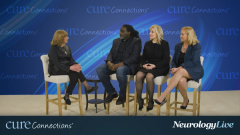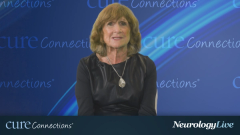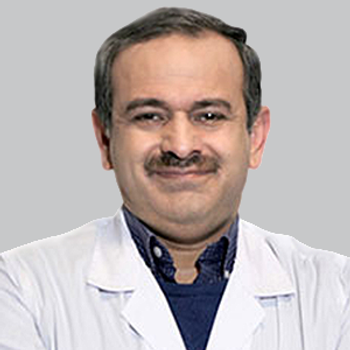
Resources for People Living with Multiple Sclerosis
Gina Murdoch describes support programs that offer equipment, education, and services for the multiple sclerosis community.
Episodes in this series

June Halper, MSN, APN-C, MSCN, FAAN: Gina, in adjusting your services, a number of patients with multiple sclerosis out there are more advanced in their disability. That may be a challenge for you in terms of the services needed. Besides the more advanced patients, what other services are you offering in terms of help? MSAA [Multiple Sclerosis Association of America] was 1 of the first organizations that had an equipment loan closet for me when I started in MS [multiple sclerosis]. If we couldn’t get a wheelchair or walker, I’d call MSAA. What other services are in place?
Gina Murdoch: We still have the equipment program, but we give out new equipment.
June Halper, MSN, APN-C, MSCN, FAAN: That’s good. They were old at that time.
Gina Murdoch: Wesend out about 4000 pieces of equipment each year.
June Halper, MSN, APN-C, MSCN, FAAN: When I went to the equipment closet, it was all used at that time.
Gina Murdoch: This is all new equipment. There’s an income guideline, so we make sure we’re providing those pieces of equipment to those who need it the most. We also have a cooling vest program. Obviously, heat sensitivity is a big issue for those living with MS. Those are 2 programs that we have that make a direct impact. Having somebody able to use a rollator, a shower bar, or a shower chair can be so important for them living their best lives and handling their MS, especially in advanced disease.
We also provide programs and services in education about life with MS. You talked about relapses. We have a relapse tool kit that’s predicated on preparedness. What do you do? Whom do you call? How do you have a conversation with somebody? It’s preemptive education. We also talk about symptoms, treatment protocols, mental health, and family planning and make sure that individual living with MS has all the information. We talk a lot about shared decision-making and how important it is to be your own best advocate. To be your own best advocate—and how you want your life to progress with MS—you talk about the power of life with MS. But leaning into the life means making sure we provide programs, services, and education, so patients can approach this new life with MS with a sound basis of information about how they want to progress.
June Halper, MSN, APN-C, MSCN, FAAN: Craig, other than taking medication, how often does Dr Picone order tests and follow-ups, like MRIs?
Craig Mainor: I go to the doctor twice a year.
June Halper, MSN, APN-C, MSCN, FAAN: You went in yesterday.
Craig Mainor: Coincidentally, we saw each other yesterday. But there’s the plan, and when I go, every 6 months, we talk about the next visit. We also talk about the things happening in my world right now, and she asks if I have any questions about what I should look out for. It’s a pretty open conversation.
June Halper, MSN, APN-C, MSCN, FAAN: You have good insurance because you’re a full-time employee, right?
Craig Mainor: I am, yes.
June Halper, MSN, APN-C, MSCN, FAAN: Gina, tell us about a very important institution you’ve established.
Gina Murdoch: The MRI Access Fund is absolutely critical. An MRI, and Dr Picone and Craig know this, is the test that allows an individual to get a diagnosis of MS and start the process of treatment. It determines disease progression and monitors along the way. There are individuals who can’t afford the deductible or the co-pay to get an MRI, and it’s heartbreaking. MSAA provides underwriting. We underwrite about 1000 MRIs a year. It could be cranial, C-spine [cervical spine], or both, depending on what the neurologist prescribes. An MRI is the gateway to treatment.
There was a testimony that we had recently of an individual who had an MRI 3 years ago, was prescribed a new 1, and had just finished paying it off in installments over 3 years. They were faced with a horrible decision: do I put this on my family for the next 3 years as an economic burden? Do I not monitor my health? They made their way to MSAA. We get wonderful referrals from health care providers and nurses. This individual found MSAA, so we were able to cover that. They were able to monitor their disease, follow the protocol for their health care provider, and not put the economic burden on their family for the next couple of years.
June Halper, MSN, APN-C, MSCN, FAAN: Do you cover the whole United States?
Gina Murdoch: Yes. We cover the whole United States. We have staff who are bilingual, who can talk to patients in whatever language they prefer. The applications are in English and Spanish. We have an individual who’s dedicated to getting the patient qualified—go through the application process, and make sure they go to an imaging center that’s close and convenient to them, so we can speed through that process as quickly as possible. Then they can continue on their health care journey.
Mary Ann Picone, MD: We’ve definitely taken advantage of that. It’s been a big help, both the cooling vest program and the MRI program. June, you asked about what’s changed over the years. MRI has made a big difference in early diagnosis and in being able to monitor how patients are doing on therapy. But in today’s health care climate, being able to afford these tests is a challenge. Having those programs has been very helpful.
Transcript edited for clarity
Newsletter
Keep your finger on the pulse of neurology—subscribe to NeurologyLive for expert interviews, new data, and breakthrough treatment updates.


































